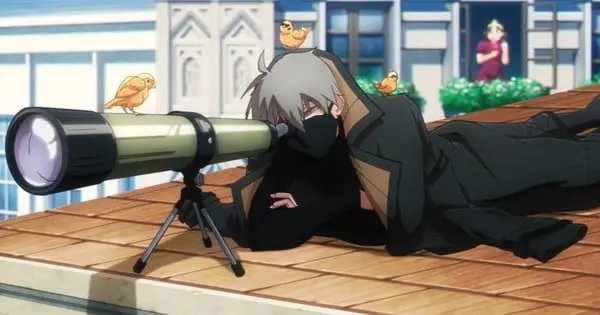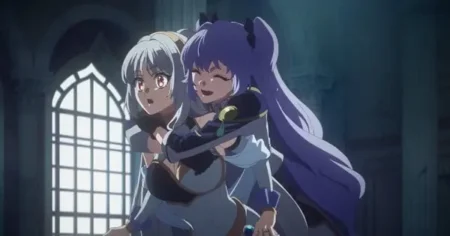To Be Hero X Episode 15, titled “Affective Disorder,” delves deep into the enigmatic character of Ghostblade, the 4th-ranked hero and a key figure in the series. This pivotal installment serves as the beginning of the “Ghostblade Arc,” offering an extensive origin story that recontextualizes his previous appearances and motivations within the overarching narrative.
Ghostblade’s Formative Years and the Pursuit of Silence
The episode opens with a haunting plea and immediately immerses viewers in Ghostblade’s memories, revealing his true name: Wang Yi. Growing up in a large, boisterous family of butchers, Wang Yi yearned for solitude, a rare luxury amidst the constant cacophony of his household. This craving for quiet led him to become increasingly distant from his family and eventually fueled his ambition to become an assassin, believing it would bring him the silence he so desperately desired. His early life experiences, including a brutal scene of butchering a pig, cemented his belief that a “proper butcher” should be precise and speak little, foreshadowing his later persona.
The Unforeseen Path to Heroism and Personal Isolation
Wang Yi’s journey to becoming the hero known as Ghostblade was unexpected. In Year 19, the social media platform FOMO emerged, allowing individuals to present themselves as heroes and gain public trust. Wang Yi’s exceptional knife skills and eerie silence, cultivated during his assassin days, captivated the public, leading him to become a viral sensation and, inadvertently, a hero. The episode highlights the double-edged sword of public trust, as Ghostblade’s silent demeanor, initially perceived as “cool,” inadvertently led to him becoming mute due to the weight of public expectation.
Despite his newfound fame, Ghostblade’s internal struggles persisted. He met Zhang Lan, a woman as antisocial as himself, whom he rescued as a hostage. Their shared quietness formed a unique bond, leading to marriage. However, the birth of their daughter, Nuonuo, introduced a new conflict. Zhang Lan desired for Ghostblade to abandon his hero persona and embrace a conventional family life, a path he found himself unable to take, leading to their divorce and Nuonuo leaving with her mother.
Recontextualizing the Loli Arc: Ghostblade’s Paternal Regret
Episode 15 powerfully recontextualizes Ghostblade’s role in the earlier “Loli Arc,” confirming that he was indeed the mysterious stalker observing Nuonuo. The episode reveals his deep-seated regret and his desperate, albeit misguided, attempts to reconnect with his estranged daughter. After 18 years, Ghostblade realizes his love for Nuonuo and tries to understand her by observing her interests and daily life. However, his socially awkward and emotionally stunted nature leads him to approach this “reconciliation” like an assassination mission, inadvertently terrifying Nuonuo and viewing Loli, Nuonuo’s pink-haired best friend, as a negative influence. This tragic misinterpretation underscores his inability to express his emotions and bridge the gap with his family, particularly Nuonuo.
The Glimmer Laboratory Incident and Unresolved Conflicts
Amidst Ghostblade’s personal turmoil, an emergency unfolds at the Glimmer Laboratory. DJ Shindig, a former top hero turned villain, launches an attack, attempting to release a corrosive alien substance known as Fear. The episode shows Ghostblade being called in as a “cleaner” to manage the chaos, even as he grapples with his profound personal issues. This incident further highlights the complex and often indifferent nature of Hero Agencies, which are willing to employ individuals like Ghostblade for their unique skills, regardless of their personal struggles.
Themes of Connection, Isolation, and the Hero Persona
“To Be Hero X” Episode 15 is a deeply emotional and character-driven installment that explores themes of wanting to be understood, the challenges of connection, and the isolating nature of a hero’s life. Ghostblade’s journey is portrayed as raw and relatable, focusing less on flashy powers and more on the quiet, internal struggles many individuals face. The episode beautifully uses varying animation styles and visual techniques, such as shaky animation and an overwhelming sensation of colors and noise when people talk, to visually convey Ghostblade’s internal experience and his overwhelming aversion to sound and chaos. His reflection on how “beliefs can be shackles,” and the notion that true freedom comes from letting go of obsessions to focus on family, connection, and understanding, provides a bittersweet yet hopeful ending to his immediate story within the episode.









